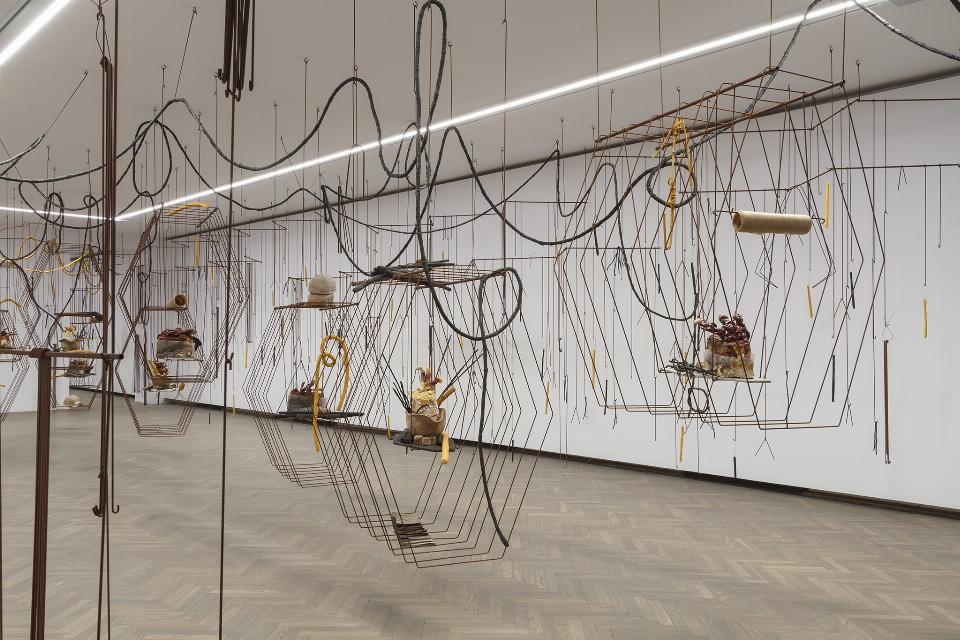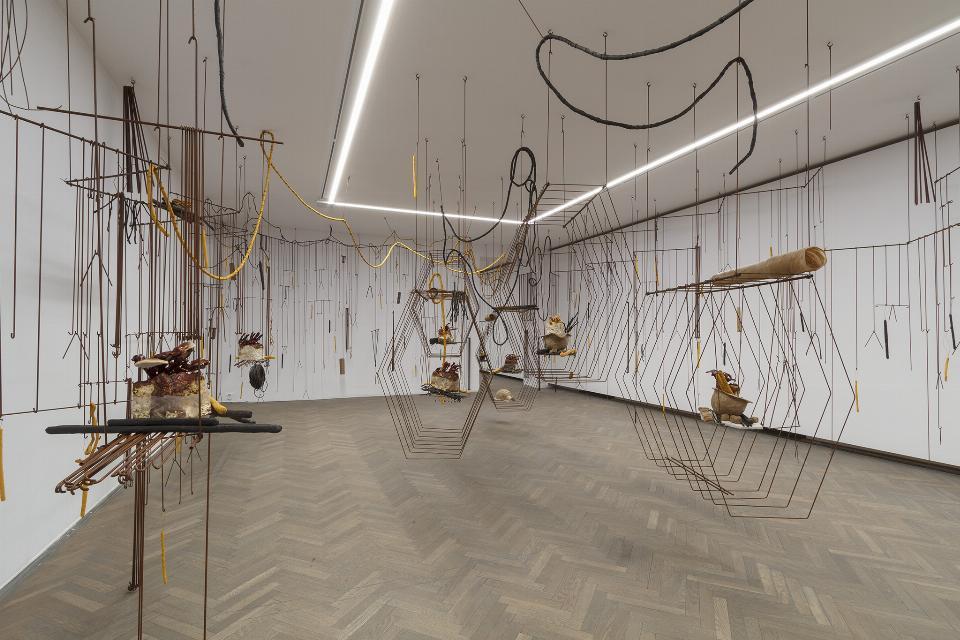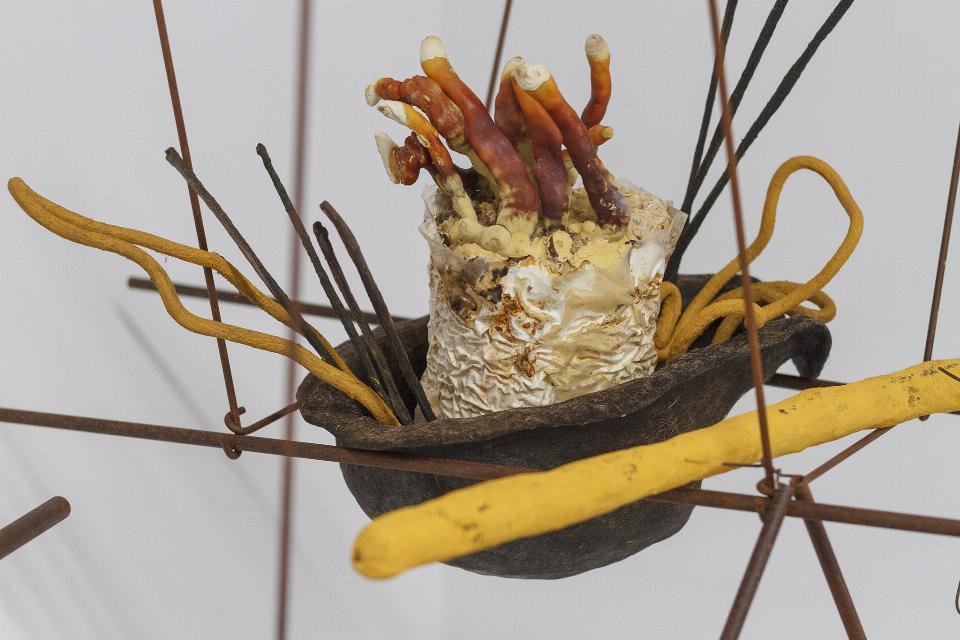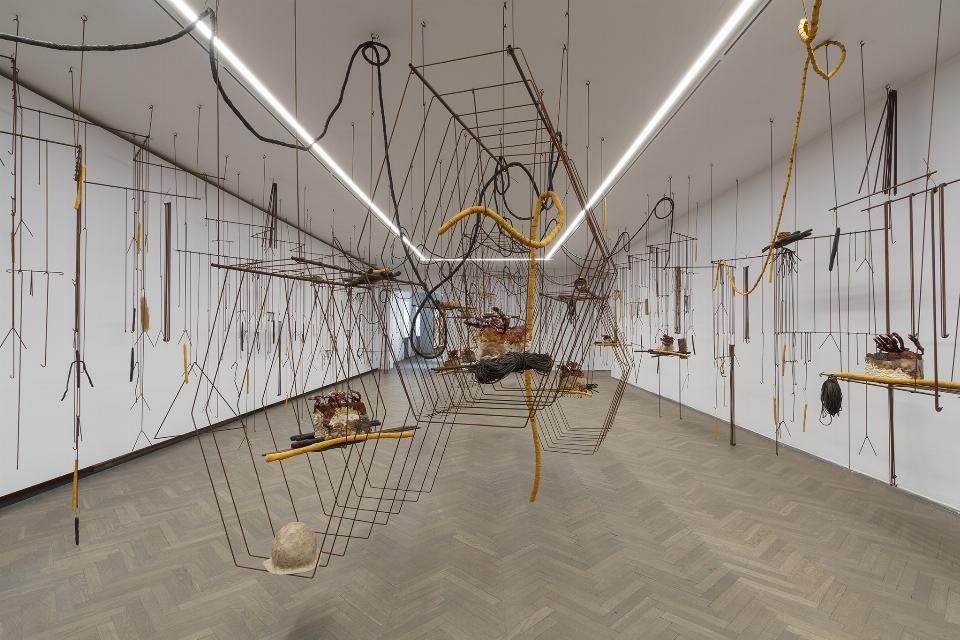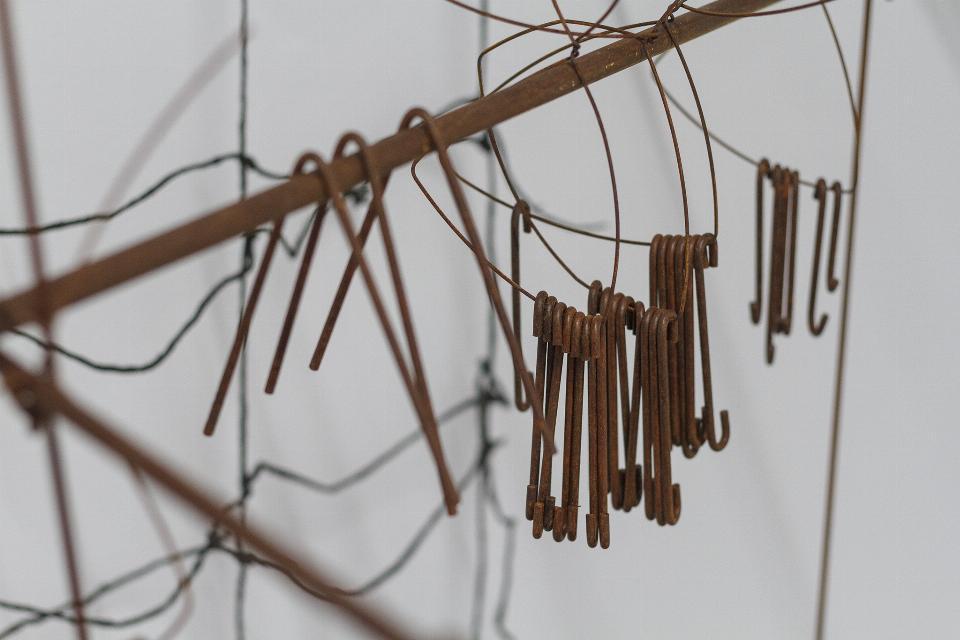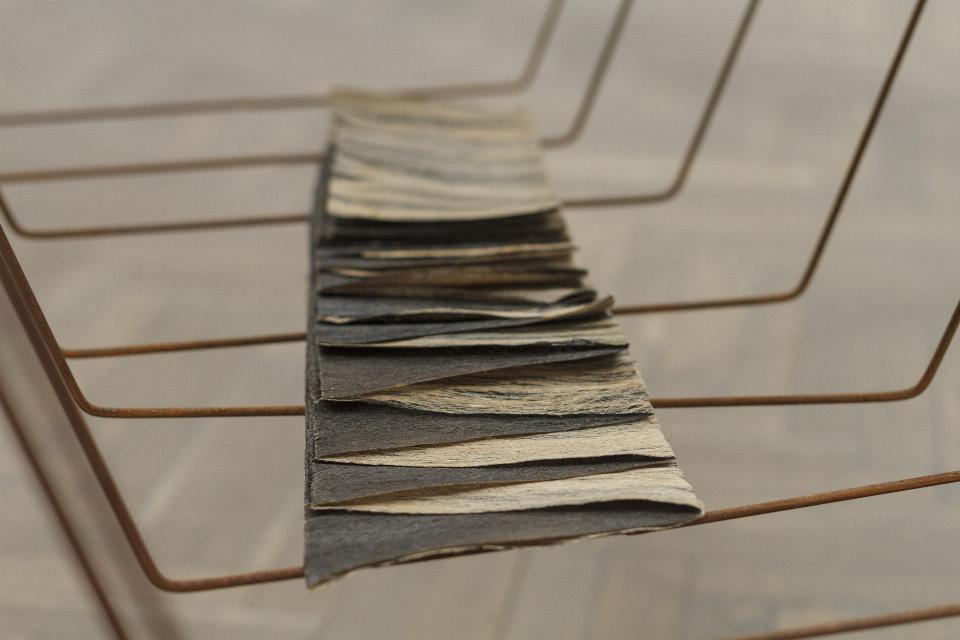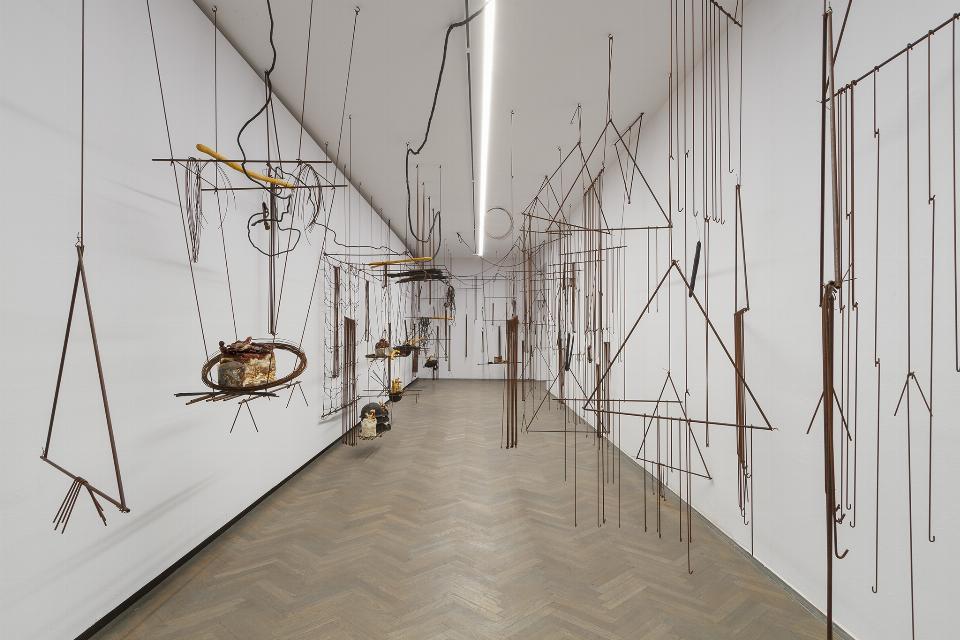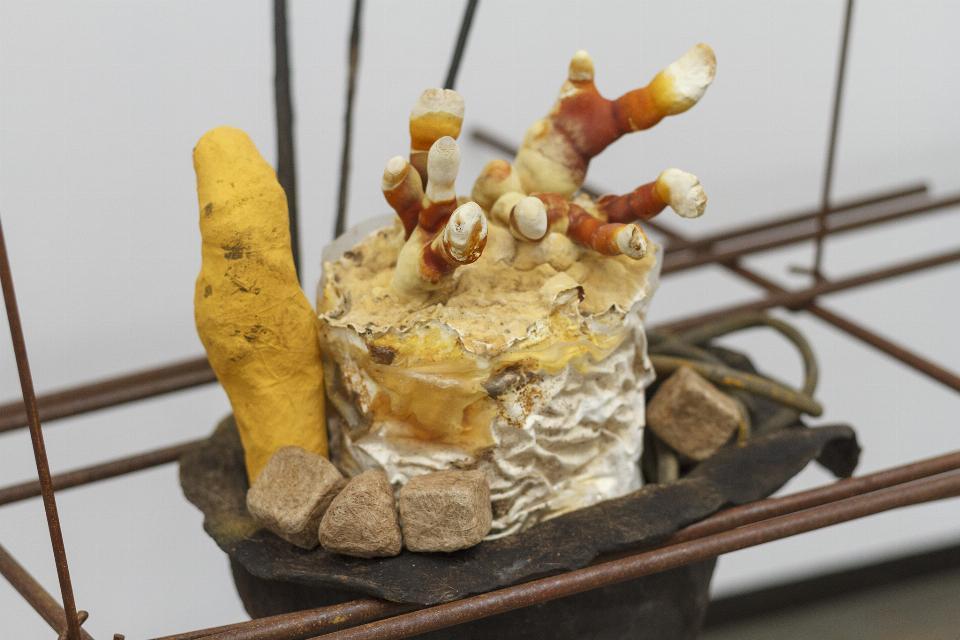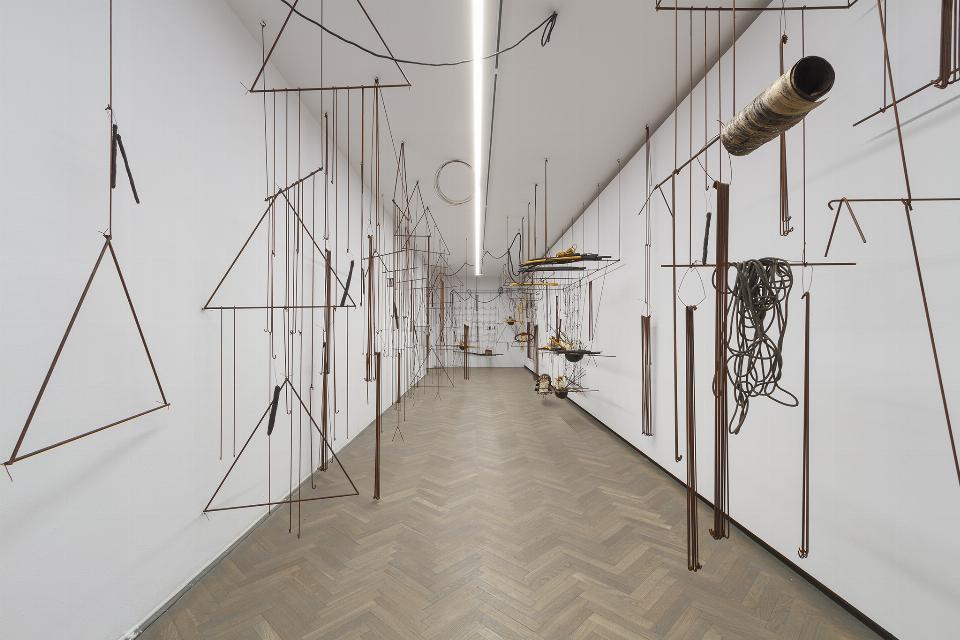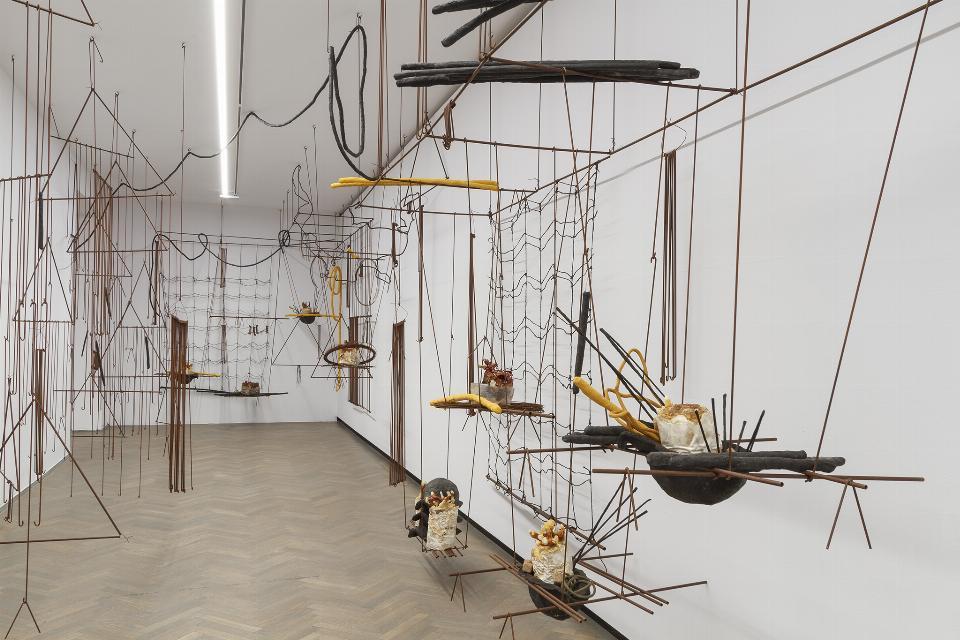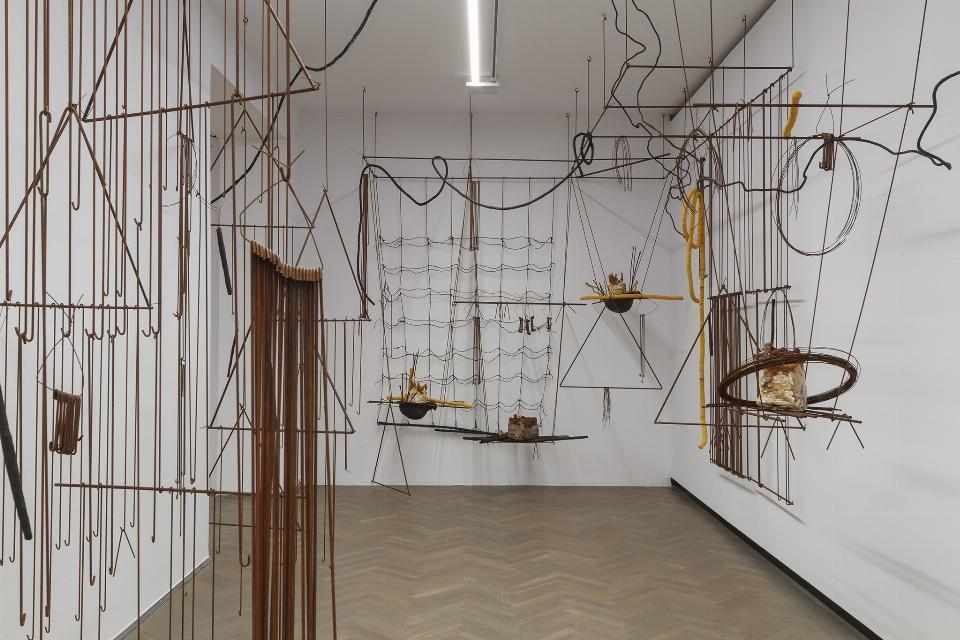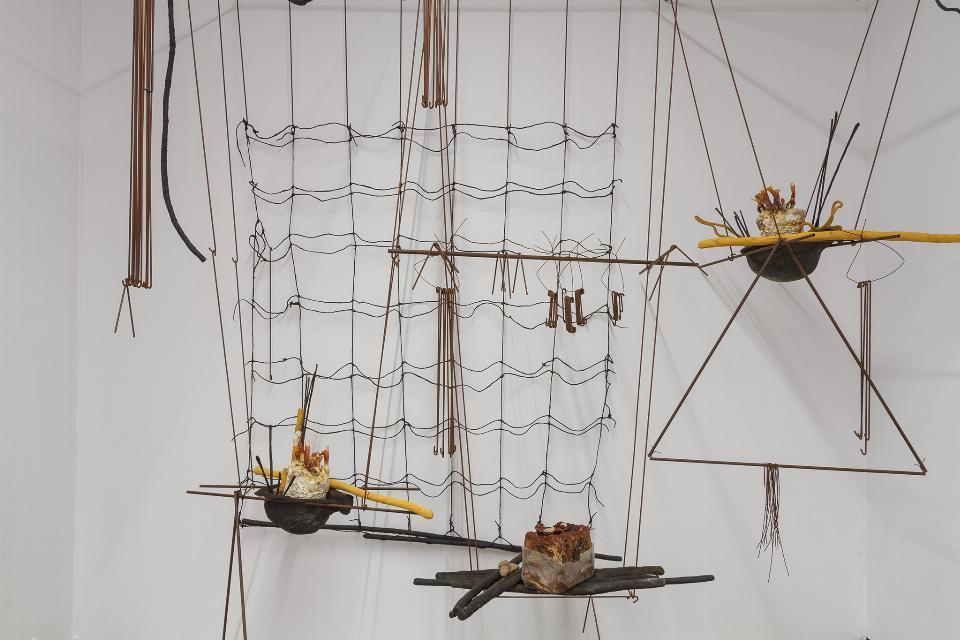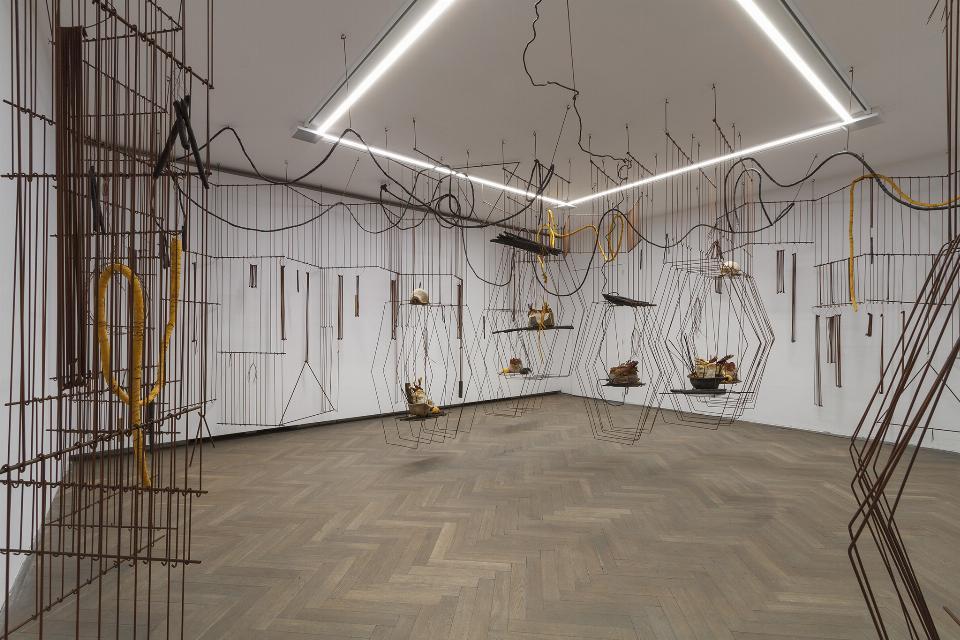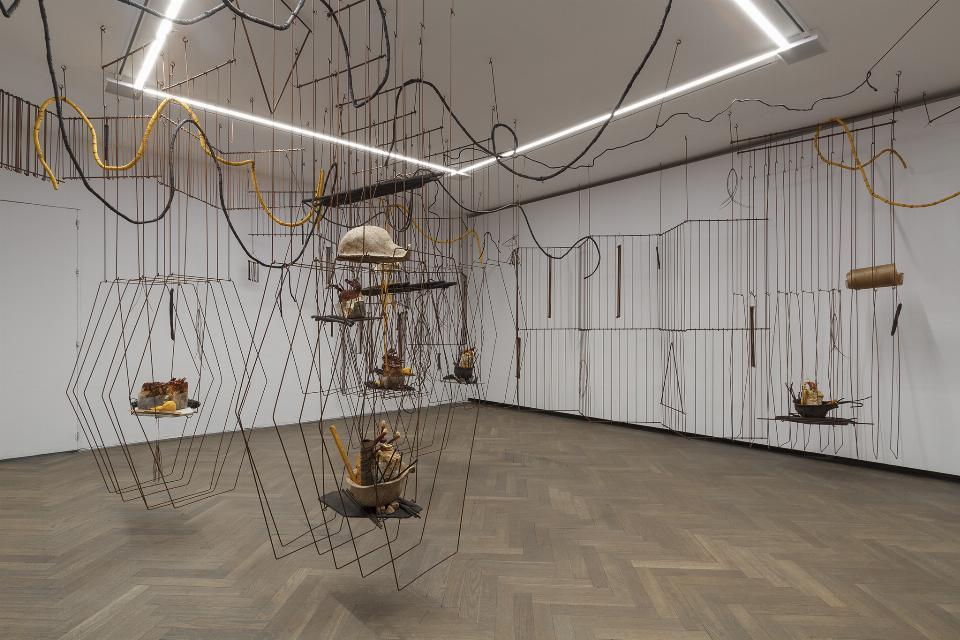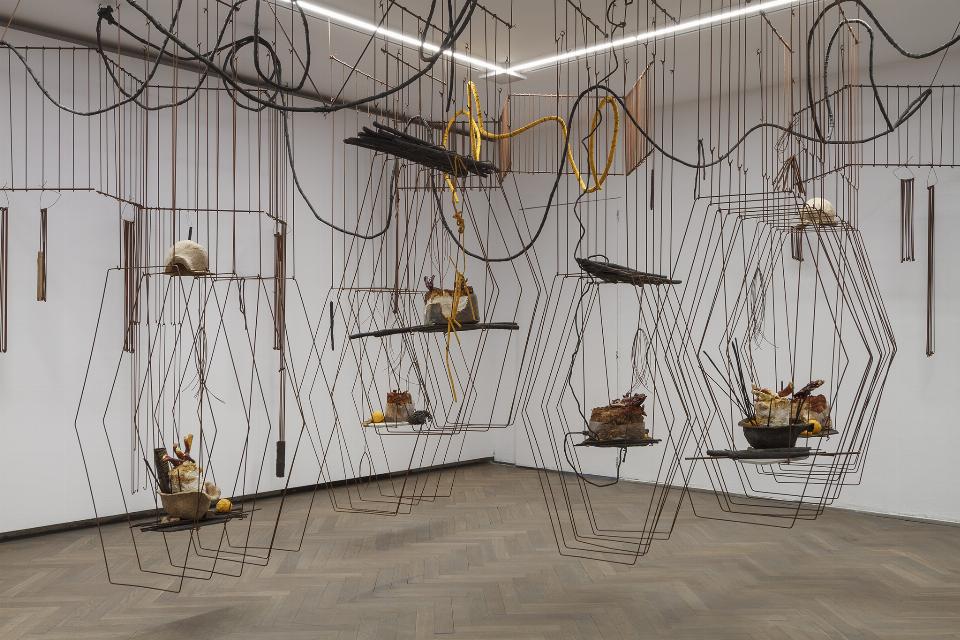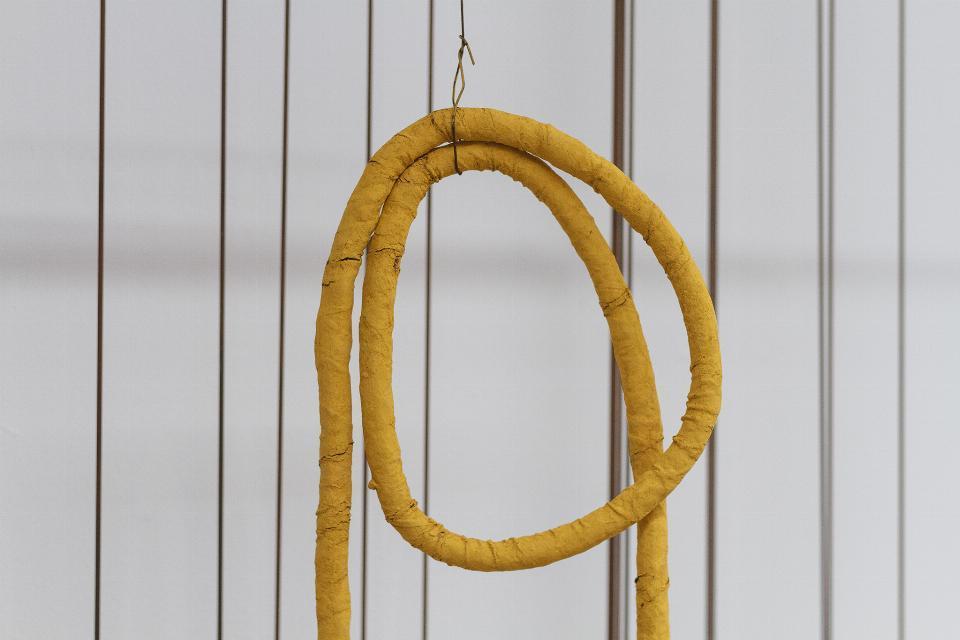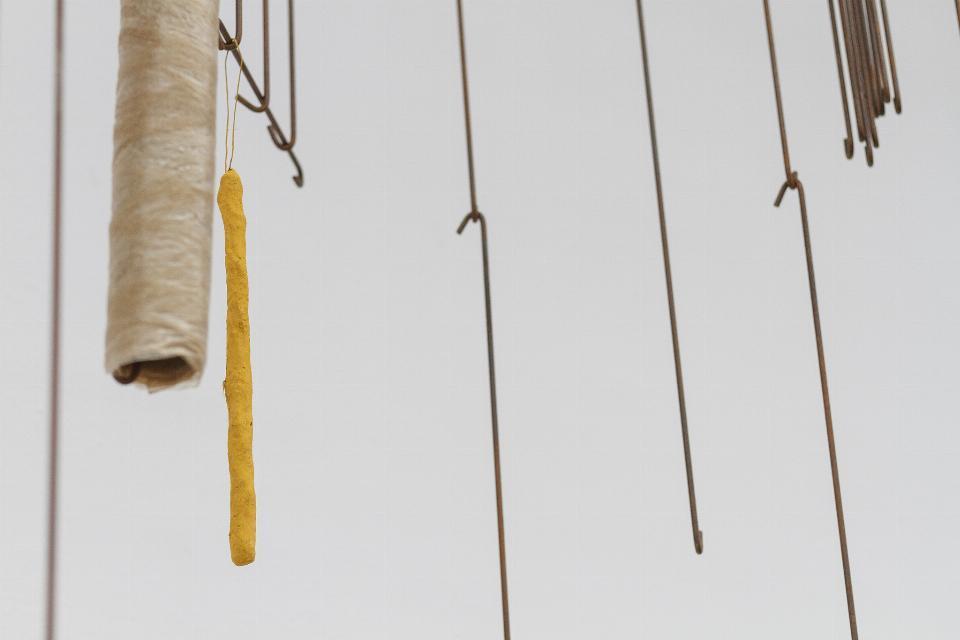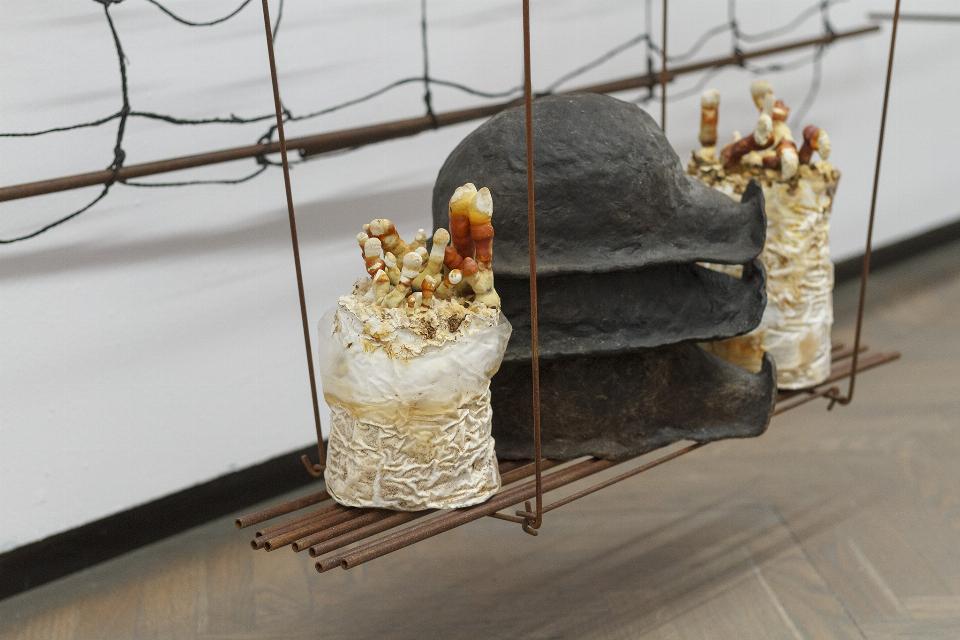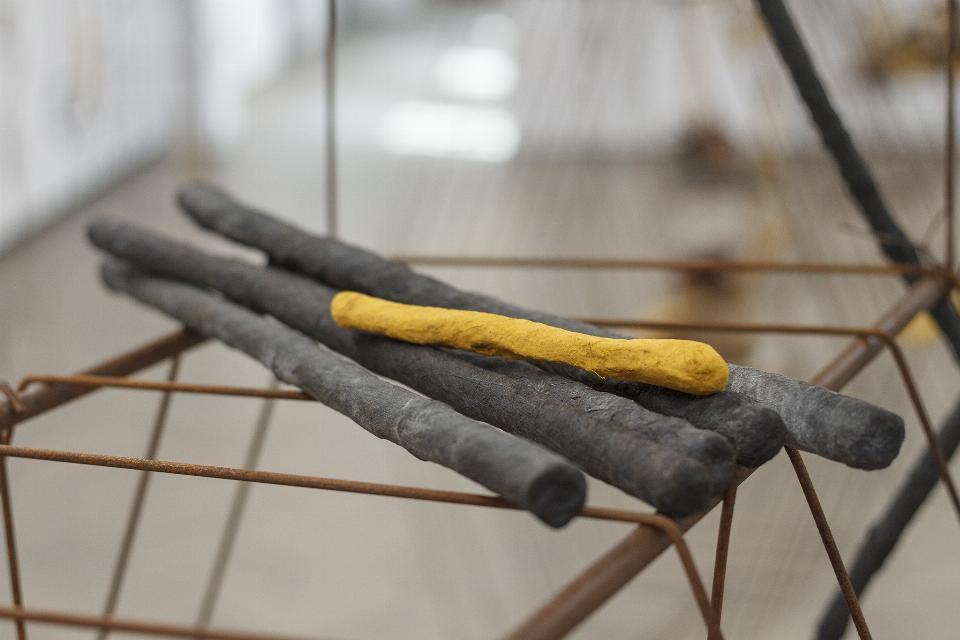The Means, The Milieu
Due to the regulation of the Council of Ministers and the temporary closure of cultural institutions, the exhibition “The Means, The Milieu” will be on display until March 20, 2021.
Fungal Rhythms
On Iza Tarasewicz’s The Means, The Milieu
by Borbála Soós
“Evolution is no linear family tree, but change
in the single multidimensional being that has
grown to cover the entire surface of Earth.” [1]
Feral forms
Making the world is not exclusive to humans. The Means, The Milieu is a concrete example of this, an artwork that goes beyond metaphors and representational modes and instead enacts an elaborate parasitic mushroom takeover. Within the apparent randomness of the elements, junctions emerge. They highlight interconnectedness, constant feedback loops, repetitions and patterns of selforganisation. They create an alternative logic, a wild and disobedient position while revealing the hidden structure of chaos underlining our world with complex and entangled connections. This sprawling artwork colonises the gallery and interrupts its neat narratives. In doing so, it complicates our understanding of space, time and even how the self might be understood.
The Means, The Milieu creates its own microclimate and patterns, which were slightly different at each site the work has been installed. Consisting of thousands of variable units it can be continuously rearranged and reconfigured to adapt to different exhibition contexts as each time it spawns radically new formats. Since its first iteration in the basement of Objectif Exhibitions in Antwerp in 2014, with each exhibition the installation offers something new. The underlying structures that create its main space are provided by the forest of hexagons made of manually bent and oxidised metal rods. The hanging modular scaffolding – not unlike DNA – encodes the ability of the structure to multiply and expand. This large sculptural installation creates a network of several layers. It is a mycorrhizal network where mycelium interacts with the root system of a forest; it is a threedimensional manifestation of a web of communication with links branching out in cyberspace; and the connections of neural pathways from within our bodies. It is all of these things and more. Each constituent piece is handmade. The labour, the consideration, touch and handling generates a living form. The caoutchoucinfused hemp ropes, ochre, plaster, mushrooms and other elements offer varying manifestations of certain characters in the artwork. This sensibility reminds me of quorum sensing, a phenomenon typical of bacteria, but also characteristic of fungal cells. Quorum sensing is nature’s ability to feel the presence and density of other cells, to repress or express specific genes as beneficial, as
well as to coordinate form and behaviour en masse. For example, bacteria express energetically expensive processes as a collective. Or in the presence of other fungal cells, they coordinate behaviour to form a mushroom in unison.
[1] Lynn Margulis, Dorion Sagan, What Is Life?, University of California Press, Berkeley 2000.
Curator: Monika SzewczykIza Tarasewicz
(b. 1981 in Białystok) graduated from the Faculty of Sculpture and Performing Arts at the Academy of Fine Arts in Poznań in 2008. She lives and works in Kolonia Koplany, a small village near Białystok where she was raised. Working in sculpture, installation, drawing, and performance, her work has garnered significant acclaim both at home and abroad. She was the winner of the 2019 Bayerischen Kunstförderpreise in Fine Arts and the winner of the VIEWS 2015 Deutsche Bank Foundation Award, the premiere prize for young art in Poland, the competition co-organized with Zachęta – National Gallery of Art in Warsaw. In 2013, she was a nominee for the Polityka Passport award in the Visual Arts category.
In 2016, she participated in the 32nd Bienal de São Paulo, 5th Moscow International Biennale for Young Art, and the 11th Gwangju Biennale, and in 2018 she represented Poland at the 16th Venice Architecture Biennale in collaboration with CENTRALA studio. Her work has been featured in numerous solo and group exhibitions internationally, at such venues as: Ludwig Museum, Budapest (2020), Kunsthaus Dresden (2020), State Art Gallery, Sopot (2020), Pori Art Museum, Finland (2019), Museum of Contemporary Art, Zagreb (2018), Contemporary Art Centre, Vilnius (2018), KUMU Art Museum, Tallinn (2017), Arsenal Gallery in Białystok (2017), Nogueras Blanchard, Madrid (2017), Futura, Prague (2016), European Central Bank, Frankfurt (2016), Centre of Contemporary Art in Toruń (2016), Centre for Contemporary Art Ujazdowski Castle, Warsaw (2015), Kunsthalle Bratislava (2015), Galleria Civica di Modena, Modena (2015), Polnisches Institut Berlin (2014), X. Dunikowski Museum of Sculpture in Królikarnia palace, Warsaw (2013), amongst many others.
Her monumental installation Once Information Has Passed Into Protein is on semi-permanent display at the Museum of Fine Art Leipzig, commissioned by Art Collection Telekom. Her work is currently featured in the group exhibition Sculpture in Search of a Place at the Zachęta – National Gallery of Art in Warsaw (01.02–25.04.2021). She is also invited to take part in the 12th edition of the NARRATIONS festival in Gdańsk under the slogan Gdańsk 2080. Futurological Congress (which was moved from November 2020 to November 2021 due to the coronavirus pandemic).

PLAN YOUR VISIT
Opening times:
Thuesday – Sunday
10:00-18:00
Last admission
to exhibition is at:
17.30
